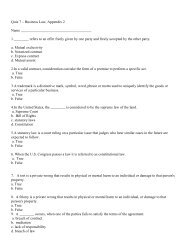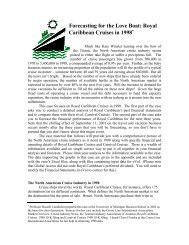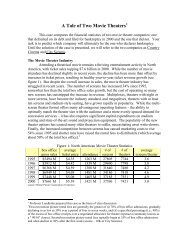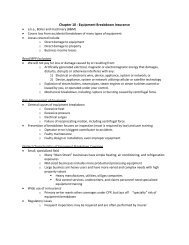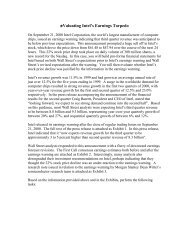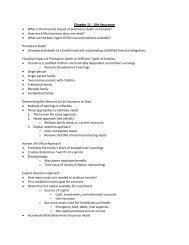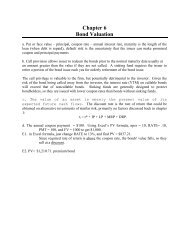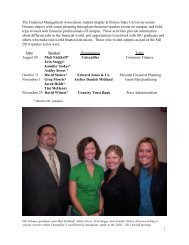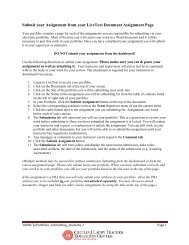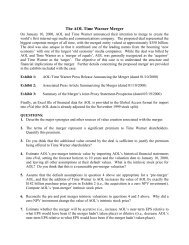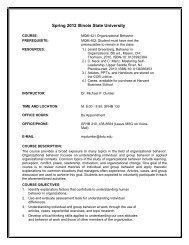Evaluating a Firm's External Environment - Illinois State University
Evaluating a Firm's External Environment - Illinois State University
Evaluating a Firm's External Environment - Illinois State University
Create successful ePaper yourself
Turn your PDF publications into a flip-book with our unique Google optimized e-Paper software.
M02_BARN4586_03_SE_C02.qxd 7/1/09 7:34 AM Page 59<br />
Chapter 2: <strong>Evaluating</strong> a Firm’s <strong>External</strong> <strong>Environment</strong> 59<br />
advantages may find divestment a superior option to harvest, because they have<br />
few competitive advantages they can exploit through harvesting.<br />
In the 1980s, GE used this rapid divestment approach to virtually abandon<br />
the consumer electronics business. Total demand in this business was more or less<br />
stable during the 1980s, but competition (mainly from Asian manufacturers)<br />
increased substantially. Rather than remain in this business, GE sold most of its<br />
consumer electronics operations and used the capital to enter into the medical<br />
imaging industry, where this firm has found an environment more conducive to<br />
superior performance. 58<br />
In the defense business, divestment is the stated strategy of General<br />
Dynamics, at least in some of its business segments. General Dynamics’ managers<br />
recognized early on that the changing defense industry could not support all the<br />
incumbent firms. When General Dynamics concluded that it could not remain a<br />
leader in some of its businesses, it decided to divest those and concentrate on a<br />
few remaining businesses. Since 1991, General Dynamics has sold businesses<br />
worth over $2.83 billion, including its missile systems business, its Cessna aircraft<br />
division, and its tactical aircraft division (maker of the very successful F-16 aircraft<br />
and partner in the development of the next generation of fighter aircraft, the F-22).<br />
These divestitures have left General Dynamics in just three businesses: armored<br />
tanks, nuclear submarines, and space launch vehicles. During this time, the market<br />
price of General Dynamics stock has returned almost $4.5 billion to its<br />
investors, has seen its stock go from $25 per share to a high of $110 per share, and<br />
has provided a total return to stockholders of 555 percent. 59<br />
Of course, not all divestments are caused by industry decline. Sometimes<br />
firms divest certain operations to focus their efforts on remaining operations,<br />
sometimes they divest to raise capital, and sometimes they divest to simplify<br />
operations. These types of divestments reflect a firm’s diversification strategy and<br />
are explored in detail in Chapter 11.<br />
Summary<br />
The strategic management process requires that a firm engage in an analysis of threats and<br />
opportunities in its competitive environment before a strategic choice can be made. This<br />
analysis begins with an understanding of the firm’s general environment. This general<br />
environment has six components: technological change, demographic trends, cultural<br />
trends, economic climate, legal and political conditions, and specific international events.<br />
Although some of these components of the general environment can affect a firm directly,<br />
more frequently they affect a firm through their impact on its local environment.<br />
The S-C-P model is a theoretical framework that enables the analysis of a firm’s local<br />
environment and that links the structure of the industry within which a firm operates, its<br />
strategic alternatives, and firm performance. In this model, structure is defined as industry<br />
structure and includes those attributes of a firm’s industry that constrain a firm’s strategic<br />
alternatives and performance. Conduct is defined as a firm’s strategies. Performance refers<br />
either to the performance of a firm in an industry or the performance of the entire economy—although<br />
the former definition of performance is more important for most strategic<br />
management purposes.<br />
The S-C-P model can be used to develop tools for analyzing threats in a firm’s competitive<br />
environment. The most influential of these tools is called the “five forces framework.”<br />
The five forces are: the threat of entry, the threat of rivalry, the threat of substitutes,



